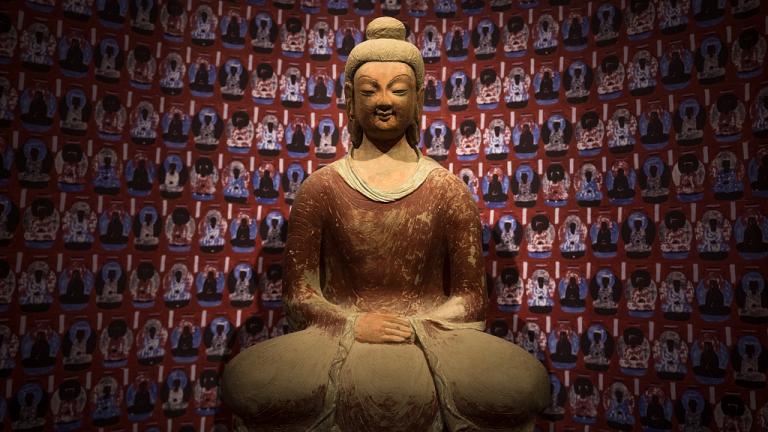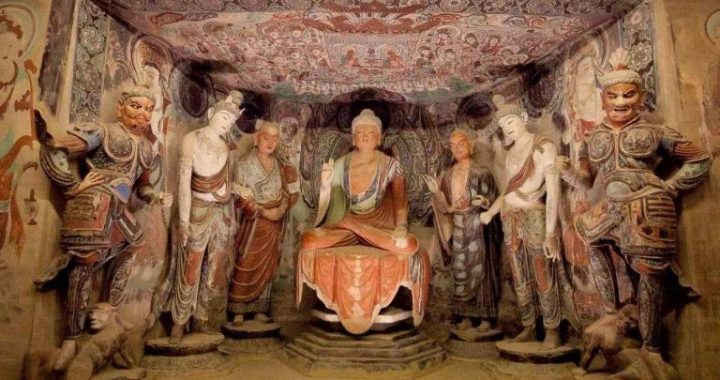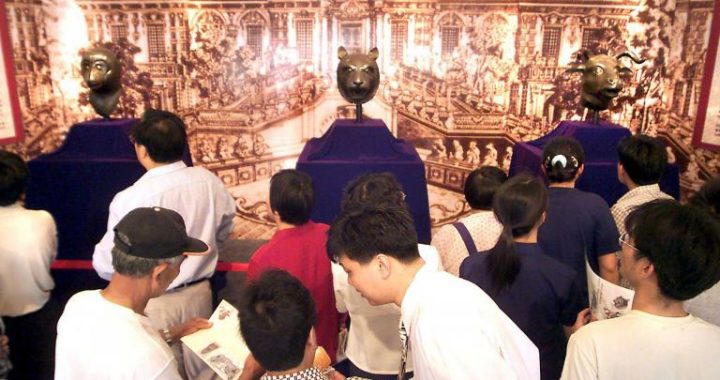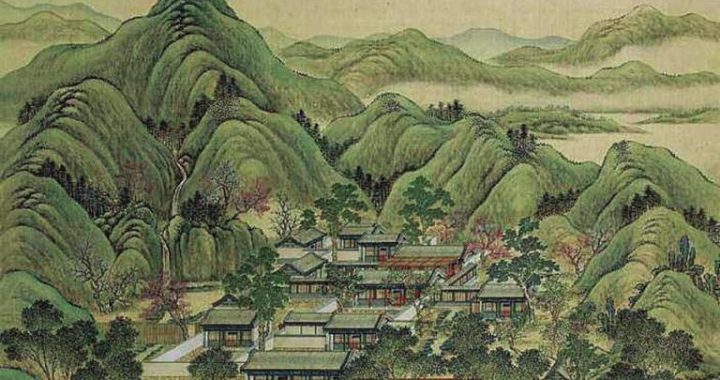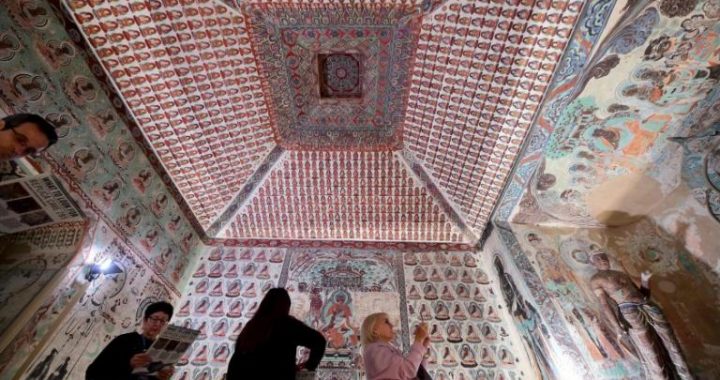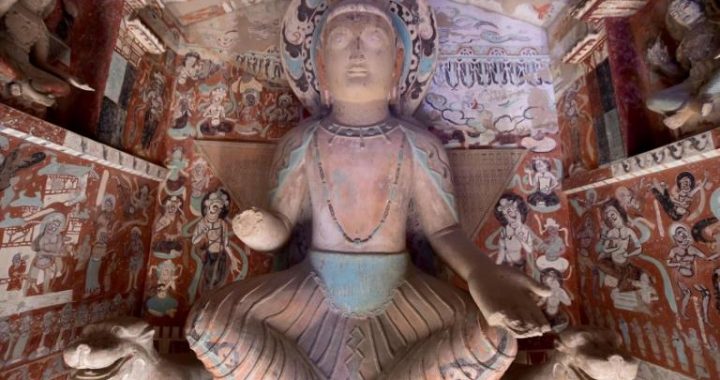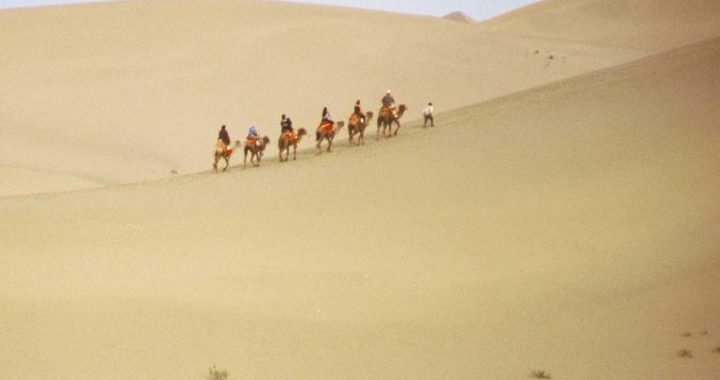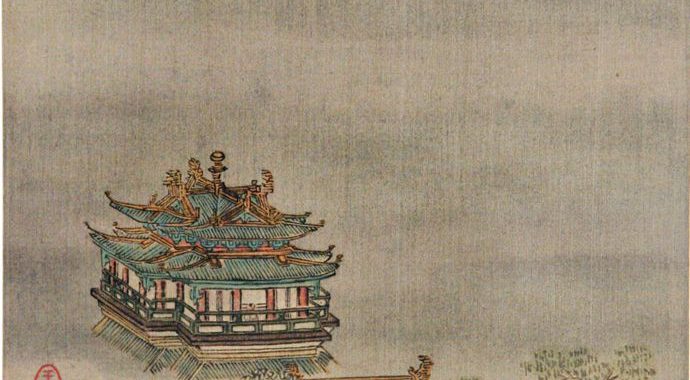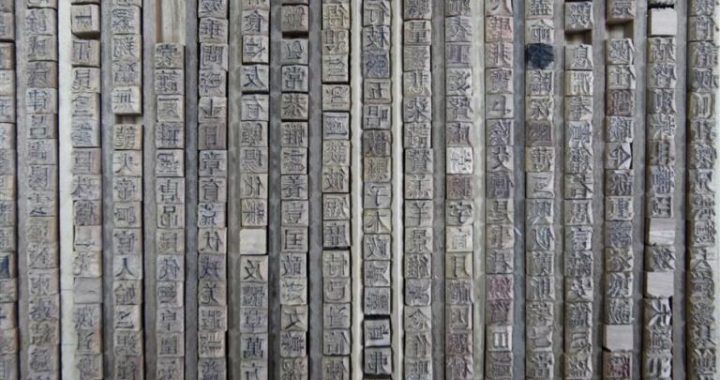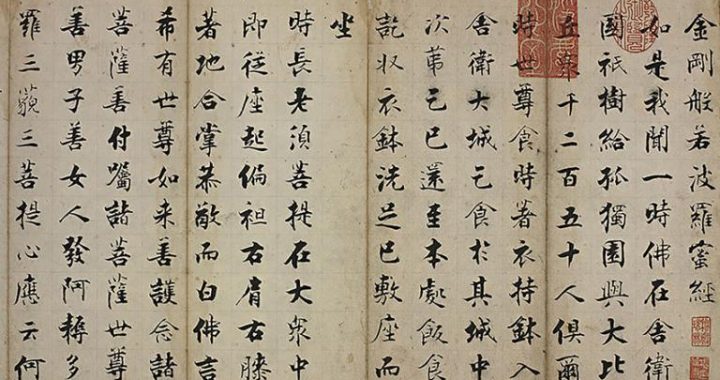Types of Painted Sculpture of Dunhuang
6 min readDunhuang was a key point of communication and important town of military strategy on the ancient Silk Road.It was also a location of confluence for the world’s four major civilizations,various religious faiths,and national cultures.Since the 4th century,a lot of grottoes had been built in Dunhuang,including the Mogao Grottoes,the Western Thousand Buddha Caves,the Yulin Grottoes in Anxi,theEastern Thousand Buddha Caves,and the Five-Temple Grottoes in Subei.These caves were situated in the same prefecture of ancient Dunhuang.They are closely located geographically,share the same contents,bear similar styles and belong to the category of Dunhuang art;therefore,they together form the Dunhuang grottoes.Thereare over 800 caves currently discovered in Dunhuang-735 at the Mogao Grottoes,22 at the Western Thousand Buddha Caves,42 at the Yulin Grottoes,7 at the Eastern Thousand Buddha Caves,and 6 at the Five-Temple Grottoes.
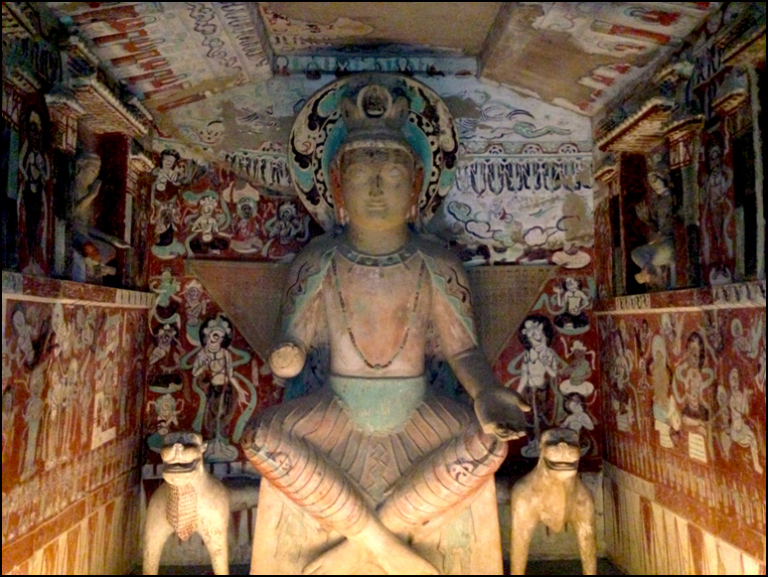
In early 1924,Langdon Warner came to Dunhuang.By then the Library Cave was empty.He was reluctant to return with nothing and therefore turned his attention to the caves.He applied adhesive plaster to murals and stripped dozens of exquisite mural sections in Caves 320,321,323,329,331,335,372 and stole a worshiping bodhisattva statue of the Tang dynasty in Cave 328.These art works were collectedin Fogg Museum of Art(later transferred to Sackler Museum of Harvard University)and became one of the rare relics in the museum then.He would have cut away moremurals if he had not used up the glue.He brought with him glue-makers the second time he came to Dunhuang,but this time he was being closely watched by local people and obliged to return empty-handed.His despicable behavior of plundering Dunhuang relics made him notorious.
Dunhuang grotto art is a combination of architecture,painted sculpture and murals.As Sanwei Mountain on which the Dunhuang caves are located is composed of porous conglomerate rock,unable to be finely carved,so the artistic form of painted clay statues and murals was adopted.
Painted sculpture here is the principal component of grotto art.Wooden frames were made,wrapped with reeds and then applied cob on the surface before sculpture and painting.In this way,human skin,facial expressions,fluffy hairs,and costume textures are realized.Painted sculpture was mainly idol-targeted,and therefore usually placed in niches or shrines on walls,on the central stupa-formed pillars or in prominent locations on the platform,matching murals nearby and looking harmonious in color.These painted sculptures are various in size.Huge statues areover 30 meters in height,while small ones are only a dozen centimeters.Over 1,000 years later,a number of more than 2,000 statues,chiefly buddhas,bodhisattvas,disciples,maharaja-devas and vajra-warriors of the Northern Wei,Western Wei,Northern Zhou,Sui,Tang,Five Dynasties,Northern Song,Western Xia,Yuan,and Qing are still preserved.
Most painted statues are images of Sakyamuni,the founder of Buddhism.They are the main body in grottoes,placed in prominent positions,and set off with gorgeousmurals.Some portray the sermons Sakyamuni gave on his doctrines;some describe hisasceticism;some illustrate his defeat of demons and enlightenment under the bodhitree;others depict his nirvana.A famous sculpture of Sakyamuni’s nirvana is found in Cave 158 of the Mogao Grottoes,in which the Buddha lies on his right side,looking serene and peaceful,without faintest trace of pain or reluctance to leave the secular world.
The second major compoent of painted sculpture are various buddha images like Maitreya,Bhaisajya(or the Buddha of Medicine),and Amitabha.One of the huge painted sculptures at the Mogao Grottoes is found in Cave 275-a statue of Maitreya sitting crosslegged against the west wall,3.4 meters tall.
The third group of statues are bodhisattvas, such as Avalokitesvara(or Guanyin), Mahasthamaprapta, Manjusri, Samantabhadra, and worshipping bodhisattvas. Bodhisattvas usually appear quiet, dignified, and well-rounded, looking just like gentle, graceful, and elegant noblewomen, because they are tolerant, merciful, and ready to ferry all living being across the sea of bitterness. They normally stand on both sides of the Buddha to form a trinity,e.g. the Buddha of the past, present, and future in Cave 427 with the Buddha 4.25 meters tall, with big head, broad forehead, chubby cheeks, straight nose, thick lips, and short legs, wearing amaranth kasaya, looking downward and each flanked by two 3.62 meter tall attendant bodhisattvas in fancy garments and skirts, wearing bracelets and necklaces and looking noble and magnificent.
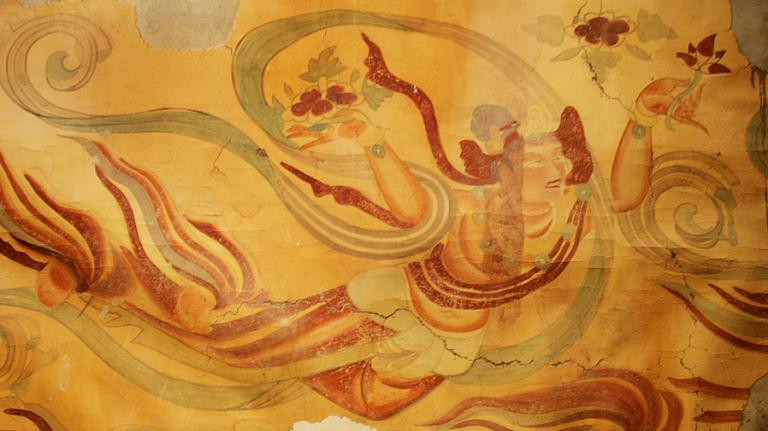
Among the Buddha’s disciples, Kaysapa and Ananda are often found among the painted statues, standing symmetrically on both sides of the sitting Buddha, Kasyapa on the left and Ananda on the right. The distinction of Ananda and Kasyapa, who are different in age, personality and features, is vividly represented. Taking Cave 419 as an example, Ananda is a square-headed, chubby-cheeked, fine-browed and big-eyed teenager wearing green kasaya, holding a peach-shaped small bowl, standing respectfully on the Buddha’s right, and looking simple, honest and childlike; instriking contrast, Kasyapa is an experienced elder with a wrinkled face, sunken eyes, and broad grins, who often went on tours of sermon and persisted the practice of asceticism.
The four devarajas guarding the four directions is also an indispensable part of painted sculpture at Mogao Grottoes. According to ancient Indian fairy tales, on the four sides of Mt. Sumeru are four heavens guarded by a heavenly king each: in the east is the white Dhrtarsastra (deva who keeps his kingdom) holding a lute; in thesouth is the blue-colored Virudhaka (deva of growth) holding a double-edge sword;i the west is the red-colored Virupaksa (broad-eyed deva) holding a silk chord; and in the north is the green Vaisravana (well-versed deva) holding a jewelled streamer.
Because of the special symbolic meaning, they were borrowed into Buddhism as deities guarding the dharma. The images of the four heavenly kings are often exaggerated,e.g. in Cave 427, they are approximately 3.6 meters tall, strong and portly, wearing coronets, armors, war skirts, and long boots, draping long scarves over their shoulders, and stamping earth demons under their feet, which shows up the power to subdue al1.
Vajra-warriors are often placed beside devarajas to protect the dharma with vajra-mallet in their hands. The figures in Cave 427 are 3.7 meters tall, wearing an ornate crown,a war robe, and a long scarf across the bare chest, or with eyes wide open and muscles bulging, or clasping his fist and clenching his teeth, or brandishing his arms as if giving out an angry howl. Also known as vajra-god, thus named because of vajra (weapon) held in his hand. He is usually depicted as an aweinspiring warrior with long hair coiled up, eyes bulging out, torso and feet bare, wearing a war skirt, clenching his fist or holding a vajra-mallet. The vajra-warrior on the south side of the main niche in Cave 194 of the Mogao Grottoes is redcomplexioned with mouth closely shut and eyes wide open, showing his ferocity and power, while the warrior on the north side is white-complexioned with eyes and moutl wide open, displaying his force and heroic spirit. The mutual cooperation of devarajas and vajra-warriors adds much mystery and dignity to the world of Buddhism.
Among the painted statues are quite a number of eminent monks. The statue of Hong Bian in Cave 17 is one of such statues well-preserved at the Mogao Grottoes.H wears a shawl-like kasaya, and is portrayed as firm, self-confident, dignified andengrossed in meditation. The artist demonstrated the inner world of this eminent monk by means of his reserved look, shut mouth, and fine wrinkles on the face.
